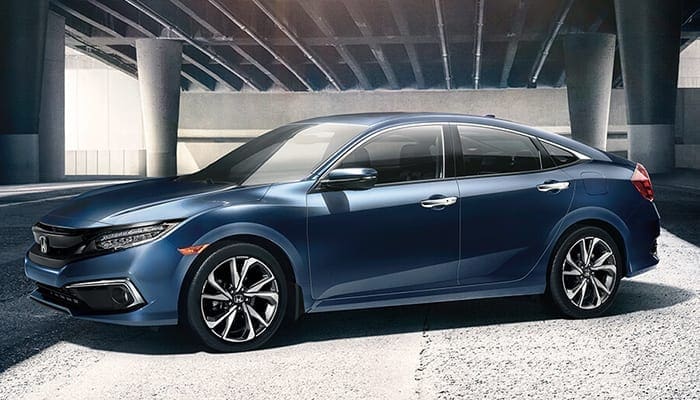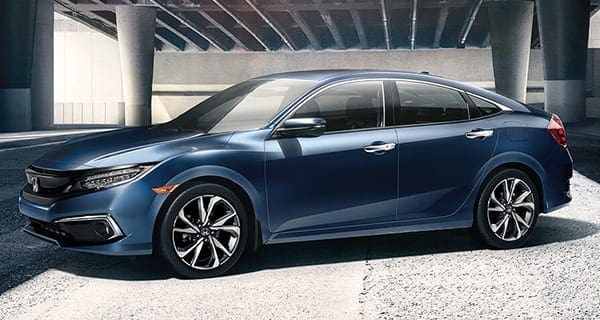
Cars are still moving out of the showrooms – if not as quickly. According to a study by the auditing firm Deloitte, some 35 per cent of all new car purchases emanate from millennials and, unsurprisingly, the top-selling cars in Canada are the Honda Civic (above), Toyota Corolla, Honda CR-V and Toyota RAV4.
 With baby boomers fading into the sunset, millennials have taken over as the biggest generation, population-wise, in the world. Born roughly between 1980 and 2000, they’re sometimes called generation Y and now represent the largest demographic group of consumers in North America. Not to mention the most strategic group of voters.
With baby boomers fading into the sunset, millennials have taken over as the biggest generation, population-wise, in the world. Born roughly between 1980 and 2000, they’re sometimes called generation Y and now represent the largest demographic group of consumers in North America. Not to mention the most strategic group of voters.
But millennials aren’t throwing themselves into automobile ownership with the same enthusiasm as boomers. Yes, they’re buying, but the emotional connection that was part and parcel of growing up and buying a car in the 1950s and ’60s apparently isn’t there.
Many millennials, it seems, view automobiles as a necessity rather than a lifestyle.
That’s more than can be said for their predecessors – generation X – who seem to have zero interest in automobiles. I attended a new model launch a few years back when, during the presentation, the marketing manager admitted his company’s biggest challenge was trying to convince generation X buyers that driving to work was superior to skateboarding, riding a bicycle or hopping on a bus.
According to who you talk to, the reasons for generation Y’s ambivalence are varied. For one thing, money is tighter. Gas and food are more expensive and cars are pricier. As well, insurance in some parts of the country is prohibitively expensive. Not to mention the stricter rules for getting your driver’s licence in the first place.
The skyrocketing cost of real estate doesn’t help. For many first-timers trying to get on the ladder, after buying a home, there isn’t enough left to handle the expenses of owning a car.
In an ironic twist of fate, millennials, the best-educated generation of all, are also often burdened with heavy student loans, which add to the problem.
As well, public transit is more efficient than it used to be, and with the range of smartphone apps and social networking available, it’s more practical than before.
And car sharing co-ops like Zipcar, Modo and Car2go have a significant presence in cities like Vancouver and Toronto – not to mention ride-hailing organizations like Uber and Lyft, whose popularity is skyrocketing in most cities around the world.
It could also be a cultural thing. According to a survey by the Washington Post, cars are viewed by many millennials as a mode of transportation and not a status symbol or a way to have fun. And a significant number factor in the environmental impact of automobiles as part of their decision. Generation Y buyers also tend to be better informed and much pickier.
That said, cars are still moving out of the showrooms – if not as quickly. According to a study by the auditing firm Deloitte, some 35 per cent of all new car purchases emanate from millennials and, unsurprisingly, the top-selling cars in Canada are the Honda Civic, Toyota Corolla, Honda CR-V and Toyota RAV4.
If you want to ascertain what millennials are buying these days, this should tell you something.
It’s also interesting to note that most generation Y buyers place fuel economy, affordability, a pleasing body style and, most importantly, up-to-date tech accessories above things like power, performance and comfort. Connectivity is everything.
Unlike boomers, women are also buying cars in greater numbers than ever, and influence buying decisions if they’re not actually signing on the dotted line.
What are manufacturers doing about it?
Things like Bluetooth connectivity and driver-automobile interface are common throughout the industry.
And Toyota, for example, simply re-invented itself with its Scion line: distancing the company from the stuffy, mom-and-pop image associated with the Camry and Corolla and appealing directly to younger buyers with affordable, entertaining models like the tC and xB. Interestingly, it lasted just six years.
A few years ago, at the North American International Auto Show in Detroit, General Motors introduced its Tru 140S and Code 130R concept cars, which were designed to appeal directly to younger buyers.
Said a Chevrolet spokesman at the launch: “For the car company that can successfully engage this generation (millennials), there is tremendous opportunity. We want to hear what they have to say, engage them in our design process and give them what they want – not what we think they want.”
The question is: are manufacturers really listening?
Ted Laturnus writes for Troy Media’s Driver Seat Associate website. An automotive journalist since 1976, he has been named Canadian Automotive Journalist of the Year twice and is past-president of the Automotive Journalists Association of Canada (AJAC).
The views, opinions and positions expressed by columnists and contributors are the author’s alone. They do not inherently or expressly reflect the views, opinions and/or positions of our publication.

